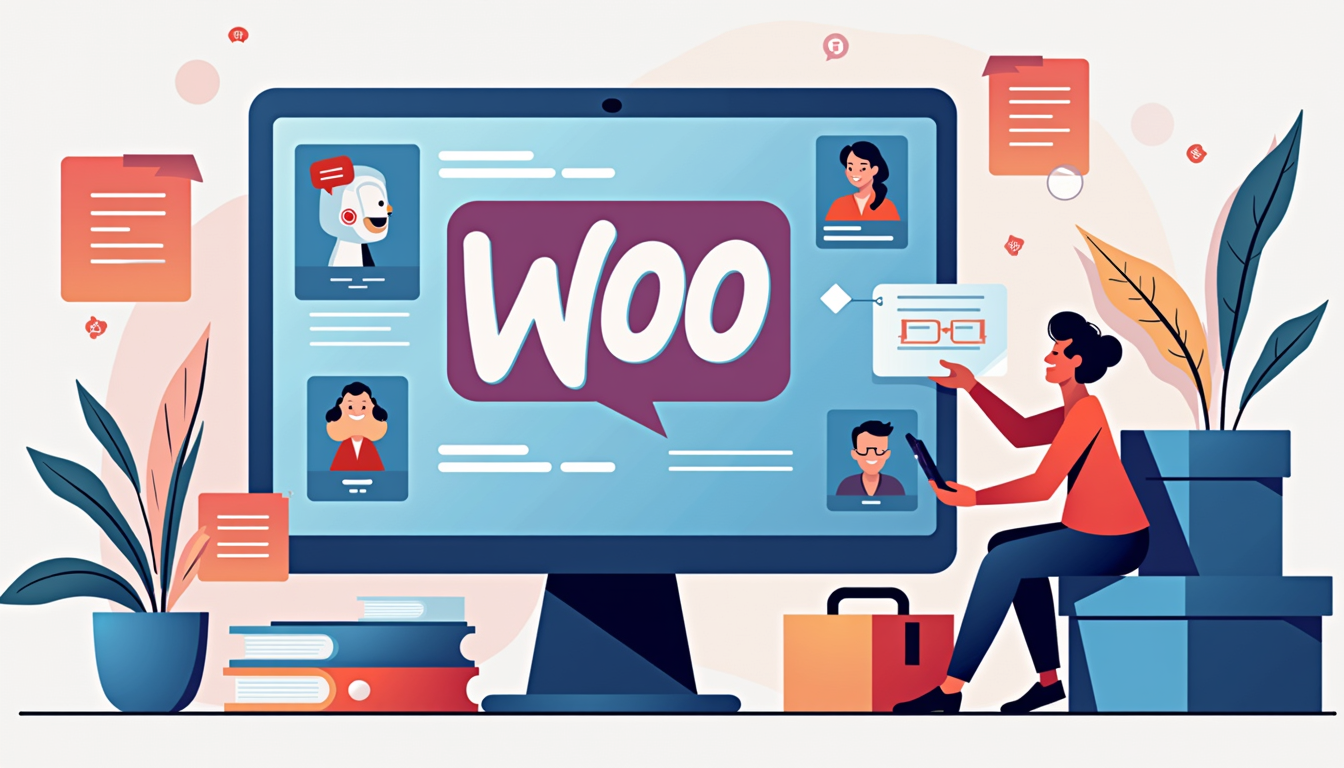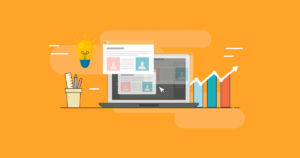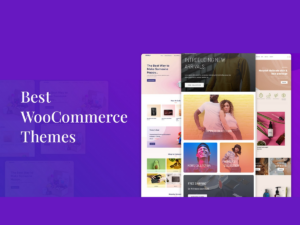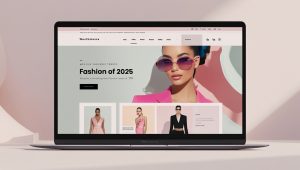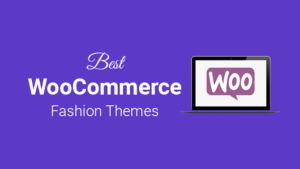The world of e-commerce is a relentless race. What worked last year can feel dated today. For WooCommerce store owners, staying ahead isn’t just about having great products; it’s about delivering a modern, intuitive, and memorable shopping experience.
In 2025, design trends are leaning heavily into personalization, immersion, and clarity. It’s no longer enough to have a functional store; it needs to feel like a natural extension of your brand and a seamless part of the user’s digital life.
Ready to future-proof your online store? Let’s dive into the 7 design trends you need to implement now.
1. Immersive & Interactive Product Experiences
Static product images are no longer enough. Customers crave the ability to inspect, interact with, and visualize products as if they were in a physical store.
Why it’s essential: It dramatically reduces purchase anxiety and return rates by giving customers a comprehensive understanding of the product. This builds confidence and directly boosts conversion rates.
Key Elements:
- 3D Product Models & 360° Views: Allow users to rotate, zoom, and examine products from every angle. Perfect for electronics, furniture, and fashion.
- Augmented Reality (AR) Integration: Let customers “place” furniture in their room or “try on” watches using their smartphone camera. Plugins like
WooCommerce ARare making this increasingly accessible. - Interactive Hotspots: On a single product image, users can click on different parts to see specific features, materials, or related products.
How to Implement it in WooCommerce:
- Plugins: Look for plugins like WooCommerce 3D Products or Product Viewer.
- Themes: Many premium WooCommerce themes are now building this functionality in.
- Services: Consider third-party services like Vectary or Google’s ARCore for more advanced implementations.
Example: A furniture store using a 360° spin to show the details of a chair, with hotspots highlighting the type of wood and upholstery.
2. AI-Powered Hyper-Personalization
Generic shopping experiences are conversion killers. In 2025, AI is moving from a “nice-to-have” to a “must-have” for delivering a truly personalized journey for each visitor.
Why it’s essential: Personalization makes customers feel seen and understood, increasing engagement, average order value, and loyalty.
Key Elements:
- AI-Driven Product Recommendations: Go beyond “customers who bought this also bought…” Use AI to analyze browsing behavior, past purchases, and even time spent on page to suggest highly relevant products.
- Personalized Homepages & Content: The homepage a returning customer sees is different from a new visitor. It showcases their favorite categories, recently viewed items, and “just for you” collections.
- Dynamic Search: The search bar becomes an intelligent assistant, predicting what the user is looking for and delivering personalized results.
How to Implement it in WooCommerce:
- Plugins: Plugins like WordPress Personalization Engine (WPPE) or Beeketing offer powerful AI recommendation tools.
- Integrations: Connect your store to AI platforms like Klevu for search or Nosto for personalization.
Example: A returning customer to a cosmetics site is greeted with a homepage banner for their favorite skincare brand and recommendations for a foundation that matches their previously purchased shade.
3. Neobrutalism & “Anti-Design” Aesthetics
Move over, minimalism. A new, bold design language is emerging. Neobrutalism is characterized by its raw, high-contrast, and intentionally “unpolished” look.
Why it’s essential: It creates a strong, unforgettable brand identity. In a sea of sleek, similar-looking stores, a neobrutalist design makes you stand out and appeals to younger, design-savvy audiences.
Key Elements:
- Asymmetrical Layouts: Breaking the grid to create dynamic, unexpected compositions.
- Bold, Un-Photoshopped Imagery: Raw product photos, hand-drawn elements, and a focus on authenticity.
- High-Contrast Color Palettes: Think bright, clashing colors with heavy black borders and shadows.
- Default-Styled UI Elements: Buttons that look like default HTML, using a raw, system font.
How to Implement it in WooCommerce:
- Theme/CSS: This is primarily achieved through custom CSS or by choosing a theme that supports this aesthetic. It’s about overriding the default “polished” styles of your theme.
- Caution: This trend is powerful but polarizing. Use it strategically if it aligns with your brand’s rebellious or artistic personality.
Example: An independent record store using a stark black-and-yellow color scheme, asymmetrical album grids, and buttons with hard drop-shadows.
4. Advanced Micro-Interactions & Haptic Feedback
Micro-interactions are the small, functional animations that provide user feedback. In 2025, they are becoming more sophisticated and are starting to extend to haptic feedback on mobile devices.
Why it’s essential: They guide the user, make the interface feel alive and responsive, and provide a satisfying sensory experience that reinforces actions.
Key Elements:
- Add-to-Cart Animations: An icon flying from the product to the cart, providing clear visual confirmation.
- Hover Effects on Buttons & Cards: Subtle color shifts, shadows, or movements that indicate an element is interactive.
- Loading Animations: Branded, engaging animations instead of a simple spinner.
- Scrolling Animations: Elements that fade or slide in as the user scrolls, creating a narrative flow.
How to Implement it in WooCommerce:
- CSS & JavaScript: Most micro-interactions are coded with CSS animations or lightweight JavaScript libraries like
GSAP(GreenSock Animation Platform). - Page Builders: Advanced page builders like Elementor Pro or Bricks have built-in animation features.
Example: When a user adds an item to the cart, a small “ping” sound plays (if sound is enabled), the cart icon shakes, and a brief “Added!” confirmation message appears.
5. Glassmorphism & Layered Depth
Glassmorphism is a design style that uses a translucent, frosted-glass effect for UI elements, creating a sense of depth and hierarchy.
Why it’s essential: It adds a touch of modern elegance and sophistication. The layered effect helps separate content (like modals, cards, and menus) from the background, improving usability.
Key Elements:
- Semi-Transparent Backgrounds: Using a
backdrop-filter: blur()CSS property. - Subtle Borders: A thin, light border to enhance the “glass” effect.
- Vibrant or Gradient Backgrounds: The effect works best on colorful or image-heavy backgrounds.
- Multi-Layered Layouts: Creating a clear visual hierarchy between foreground and background elements.
How to Implement it in WooCommerce:
- CSS: This is the primary method. You’ll need to add custom CSS to style specific elements like product cards, header menus, or promo bars.css.glass-card { background: rgba(255, 255, 255, 0.2); backdrop-filter: blur(10px); border: 1px solid rgba(255, 255, 255, 0.3); }
Example: A navigation menu that, when opened, is a semi-transparent panel that blurs the beautiful hero image behind it.
6. Ultra-Minimalist & Typography-Focused Design
While Neobrutalism is on the rise, the counter-trend of ultra-minimalism is also evolving. This is “minimalism 2.0″—stripping away everything non-essential to let the product and powerful typography take center stage.
Why it’s essential: It reduces cognitive load, creates a luxurious and high-end feel, and forces you to communicate your value proposition with clarity and impact.
Key Elements:
- Ample White Space: Using generous margins and padding to frame content.
- Large, Expressive Typography: Using bold, custom fonts as a primary design element.
- Limited Color Palette: Often monochromatic or using a single accent color.
- Sparse Imagery: One stunning, high-resolution product shot per section instead of a cluttered grid.
How to Implement it in WooCommerce:
- Theme Choice: Start with a minimalist-focused theme like Flatsome, Avada, or Astra and customize it to be even more sparse.
- Disable Clutter: Remove any unnecessary widgets, links, or promotional sections that don’t serve a direct purpose.
Example: A high-end fashion store with a black-and-white color scheme, a massive, elegant serif font for the brand name, and a single, full-screen image of their latest collection.
7. Embedded Social Proof & User-Generated Content (UGC)
Trust is the currency of e-commerce. In 2025, social proof is moving from a sidebar widget to an integrated, seamless part of the shopping experience.
Why it’s essential: It provides authentic validation from real people, which is far more powerful than any marketing copy you can write.
Key Elements:
- Photo Reviews: Allowing customers to upload photos with their reviews, displayed directly on the product page.
- Live Sales Notifications: “Someone in [City] just purchased [Product]” pop-ups that create a sense of urgency and popularity.
- Shoppable UGC Galleries: Embedding a feed of Instagram photos where your product is tagged, and making those images shoppable.
- Community Q&A: A section on the product page where potential buyers can ask questions and get answers from previous customers.
How to Implement it in WooCommerce:
- Plugins: Use plugins like Photo Reviews for WooCommerce, Judge.me, or Yotpo for advanced review management.
- Social Feed Plugins: Tools like Smash Balloon Instagram Feed can help you create shoppable UGC galleries.
- Live Sales Notification Plugins: Plugins like Fomo or Nudgify specialize in this.
Example: On a product page for a pair of sneakers, a gallery of photos from real customers wearing them is displayed directly beneath the professional product shots, with a “Shop the Look” button.
Conclusion: It’s About Experience, Not Just Transactions
The overarching theme for 2025 is clear: your WooCommerce store must be an experience. It’s not just a digital catalog; it’s an interactive, personalized, and trustworthy space where customers enjoy spending time.
You don’t need to implement all seven trends at once. Start by auditing your store. Identify the one or two trends that best align with your brand identity and customer base.


